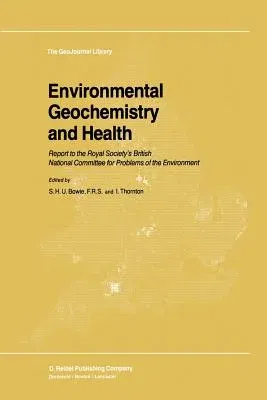Environmental Geochemistry and Health: Report to the Royal Society's British National Committee for Problems of the Environment (Softcover Reprint ofPaperback - Softcover Reprint of the Original 1st 1985, 19 October 2011

Qty
1
Turbo
Ships in 2 - 3 days
In Stock
Free Delivery
Cash on Delivery
15 Days
Free Returns
Secure Checkout
Part of Series
Geojournal Library
Print Length
140 pages
Language
English
Publisher
Springer
Date Published
19 Oct 2011
ISBN-10
940108825X
ISBN-13
9789401088251
Description
Product Details
Book Edition:
Softcover Reprint of the Original 1st 1985
Book Format:
Paperback
Country of Origin:
NL
Date Published:
19 October 2011
Dimensions:
23.39 x
15.6 x
0.84 cm
ISBN-10:
940108825X
ISBN-13:
9789401088251
Language:
English
Location:
Dordrecht
Pages:
140
Publisher:
Series:
Weight:
226.8 gm

